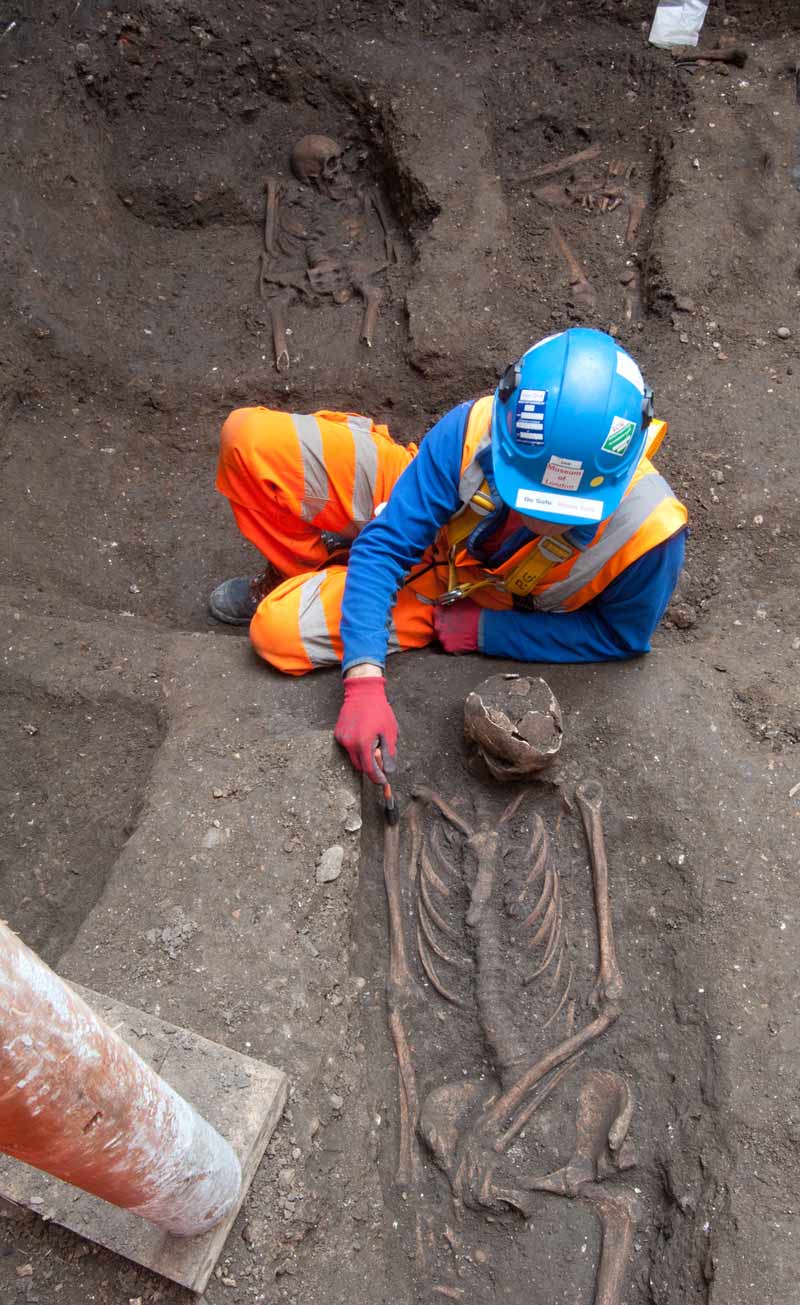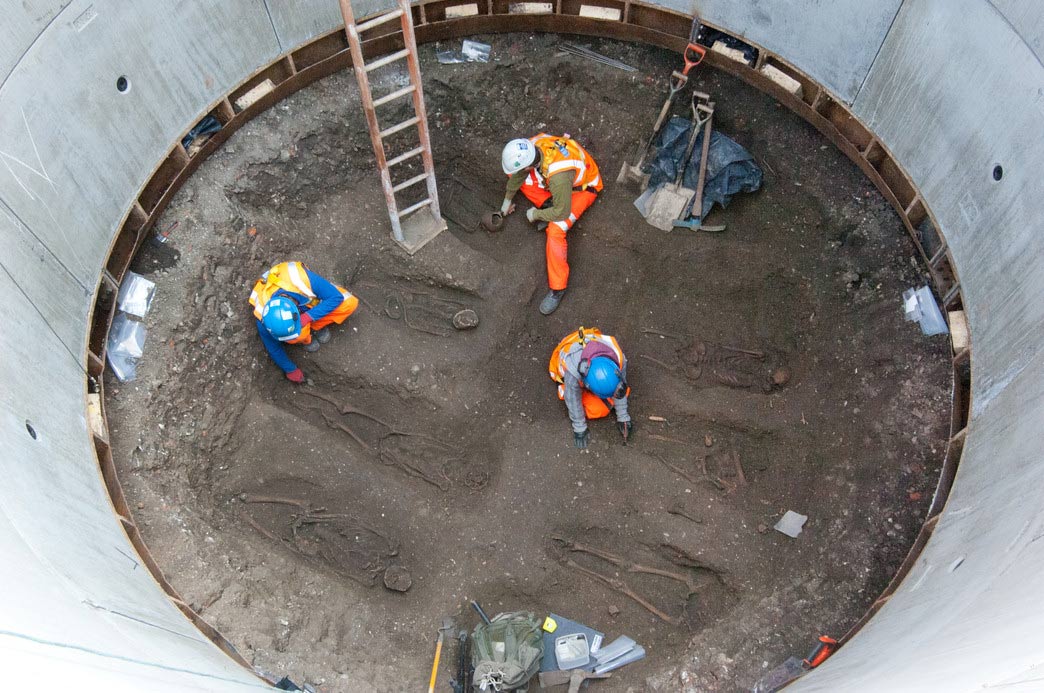14th-Century Black Death Graveyard Found in London

A railway construction project in central London has turned up the skeletons of 13 victims of the Black Death.
The find is a reminder of how much history sits beneath urbanized areas in the United Kingdom. In February, archaeologists in Leicester announced that they'd discovered the bones of the lost monarch Richard III underneath a city council parking lot. And this week, archaeologists in Edinburgh uncovered the grave of a medieval knight on the construction site of a new building.
The commuter railway at the center of the current discovery, called Crossrail, is under construction in southeast England. Archaeologists are consulting on the project to ensure that no historical artifacts or remains are destroyed. In a shaft near Charterhouse Square in the historic district of Farringdon, the researchers found two neat rows of 13 skeletons buried about 8 feet (2.5 meters) below the road.
Black Death cemetery
The depth of the burials combined with pottery dating to 1350 found in the graves suggest that the skeletons belonged to plague victims who died around 1349. There are historical records referring to a Black Death burial ground that opened in 1348 in the area, where as many as 50,000 people may have been hastily interred in less than three years. The burial ground saw continued use until the 1500s, according to CrossRail. [See Photos of the 'Black Death' Gravesites]

The Black Death, or bubonic plague, was caused by a bacterium (Yersinia pestis) spread by fleas on rats. It peaked in Europe in the mid-1300s, but killed an estimated 75 million people over the course of the 14th century. Victims sported blackened, swollen lymph nodes called buboes, contracted intense fevers and vomited blood, usually dying within days of contracting the disease.
No Man's Land
Sign up for the Live Science daily newsletter now
Get the world’s most fascinating discoveries delivered straight to your inbox.
In the 16th century, historian John Snow wrote of a Black Death burial ground in Farringdon dubbed "No Man's Land." Despite the development of the area, no trace of this graveyard had been found until the Crossrail project began. Charterhouse Square, where the skeletons were found, was a prime location for where the cemetery might be, as it hadn't been developed in the past 700 years.
In 1998, archaeologists searching for a historic chapel found a single skeleton in the square. And two years ago, Crossrail archaeologists found previously-disturbed human bones. Both of those discoveries were tantalizing clues that a larger graveyard might be nearby.
Archaeologists have taken the excavated bones to the Museum of London Archaeology for testing, including DNA tests to identify any remaining Plague bacteria and radiocarbon testing on the bones to establish firm burial dates. The scientists say there is no health risk from the Plague bacteria, as it can't survive in the soil for long (rather they are looking for the dead bacteria's DNA).
The site will be used as a shaft to support tunneling works once the skeletons are removed and analyzed. Crossrail has also turned up skeletons near Bethlem Royal Hospital, better known as Bedlam for its appalling conditions in the Middle Ages. Those skeletons (300 of them) dated back to the 1500s through 1700s.
Follow Stephanie Pappas @sipappas. Follow LiveScience on Twitter @livescience, Facebook or Google+. Original article on LiveScience.com.

Stephanie Pappas is a contributing writer for Live Science, covering topics ranging from geoscience to archaeology to the human brain and behavior. She was previously a senior writer for Live Science but is now a freelancer based in Denver, Colorado, and regularly contributes to Scientific American and The Monitor, the monthly magazine of the American Psychological Association. Stephanie received a bachelor's degree in psychology from the University of South Carolina and a graduate certificate in science communication from the University of California, Santa Cruz.
Flu: Facts about seasonal influenza and bird flu
What is hantavirus? The rare but deadly respiratory illness spread by rodents









